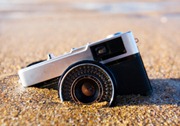 Have you lost your digital camera or camera equipped smartphone? The Stolen Camera Finder might help you find who currently owns your camera.
Have you lost your digital camera or camera equipped smartphone? The Stolen Camera Finder might help you find who currently owns your camera.
The Stolen Camera Finder is a new search engine developed over the past two years by programmer Matt Burns. The idea is to search the web for photographs that have the stolen camera’s serial number embedded in the EXIF information. If there is a match, then the person who uploaded the photo might have your camera. Once you have that information, you have to find out a way to get in touch with this person and try to recover your lost possession.
![]()
The search engine lets you upload a photo taken by your camera before it was stolen. It then extracts the EXIF data from your photo and tries to match it against a huge database of EXIF information scraped from publicly available photos on the web. According to Stolen Camera Finder, there is already 1 million cameras in their index.
The search engine uses two web crawlers for this - the first is a standard web crawler that seeks out images and searches for serial numbers on sites such as Flickr, while the second is a Google Chrome browser plugin that silently runs in the background and record serial numbers in images as they are displayed within the browser. The URL of the image and the serial number can then be sent to the main database.
If you’d like to volunteer and help this service grow you can download the Chrome plugin and index images as you browse the web. You can also run the Flickr scraper. On the other hand, if you are using a stolen camera yourself, make sure you remove EXIF data from the photos before you post them on the internet.
Thanks PetaPixel
Also see, how to recover your lost pen drive.

Comments
Post a Comment